
 Paul Potter and Jason Larson took care adding the Counteract Balancing Beads to our pickup. Potter drives a nice Model A roadster and Larson’s building a ’60s Pontiac.
Paul Potter and Jason Larson took care adding the Counteract Balancing Beads to our pickup. Potter drives a nice Model A roadster and Larson’s building a ’60s Pontiac.
Not long ago we answered an email concerning tire balancing in our “Shop Manual” column. Much to our surprise it turned out to be a hot topic. We heard from many readers who didn’t want balancing weights visible on the outer side of their car’s wheels, as well as a number who were having balancing problems in general, primarily with bias-ply tires.
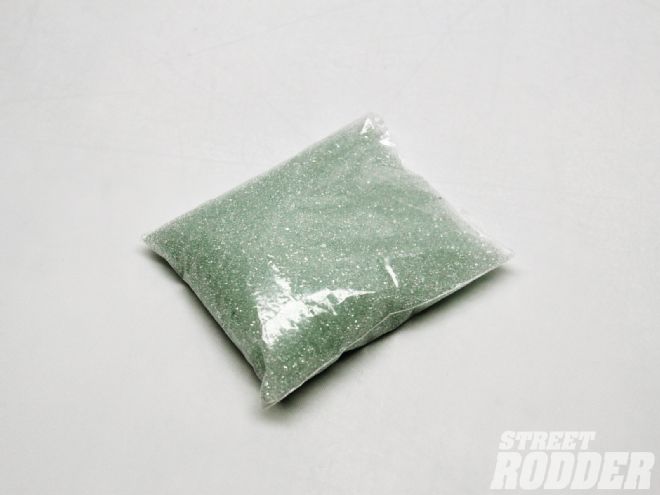 The beads come in plastic bags of various weights. When used on big truck tires the bags are thrown inside the tires, which is not recommended on passenger and light truck applications.
The beads come in plastic bags of various weights. When used on big truck tires the bags are thrown inside the tires, which is not recommended on passenger and light truck applications.
In most cases, an out-of-balance condition will cause a vibration in the 50- to 70-mph range, and it is often the result of a surprisingly small amount of imbalance. An ounce of imbalance is all it takes to make a noticeable vibration. And while this isn’t always the case, an imbalance up front can often be felt in the steering wheel, while out-of-balance rear tires will normally be felt in the seat of your pants.
Although some street rodders don’t like visible weights on wheels, the fact is in most cases they are necessary for proper balancing. Modern spin balancers detect the tire and wheel assemblies on two planes, vertical and horizontal; static imbalance creates a hop or vertical vibration, while dynamic imbalance creates a side-to-side or wobbling vibration. Weights are normally required on the inside and outside of the wheel to correct both deficiencies.
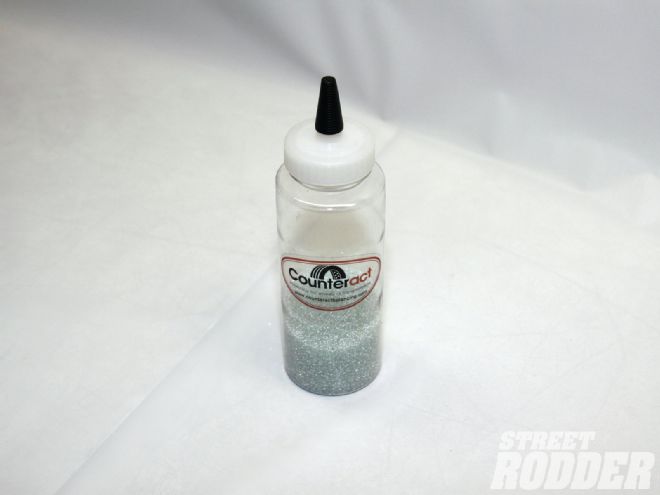 One method to install the beads is with the included plastic bottle. It’s time-consuming, but it can be done.
One method to install the beads is with the included plastic bottle. It’s time-consuming, but it can be done.
The most common weights used to balance tires are the clip-on style most of us have seen. Another popular option are stick-on, or tape weights. These can often be somewhat hidden and when installed properly can be used for both static and dynamic balancing (often in conjunction with clip-on weights on the back side of the wheel). A lesser-known option to tire balancing is a product called Counteract Balancing Beads.
Developed in 1997 by Canadian Roger LeBlanc, Counteract Balancing Beads are put inside the tire where inertia causes them to move in the opposite direction of the motion that causes the imbalance. Made from recycled tempered glass that has been given a non-stick coating to keep them from clumping together, once the beads move into position, static electricity keeps them there, according to the manufacturer. They add that if the beads are dislodged as the result of a sharp bump, or as a result of the car being parked for an extended period, a few revolutions of the tire puts them right back where they should be.
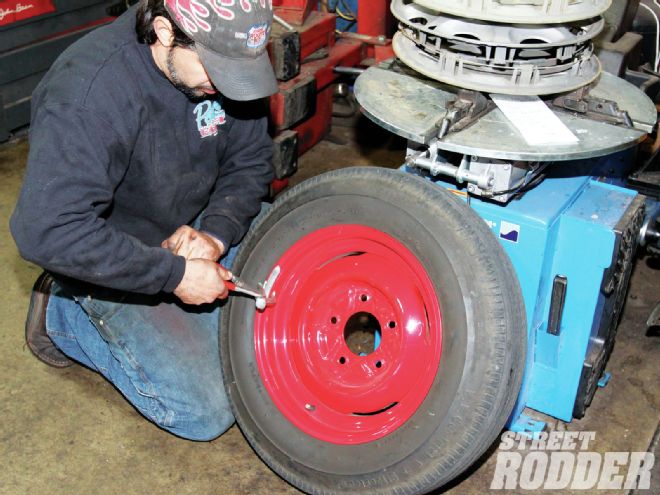 After taking out the valve core, Larson removed all the clip-on weights from the wheels.
After taking out the valve core, Larson removed all the clip-on weights from the wheels.
Originally targeted for the trucking industry, Counteract Balancing Beads have become popular with motorcyclists and we know of several restorers who have used them in a variety of cars, so we decided to give them a try. We found them at one of the biggest bike accessory dealers in the country, Chrome World in Selbyville, Delaware. Using the chart on their website to determine what we needed, we ordered 4-ounce bags of Counteract.
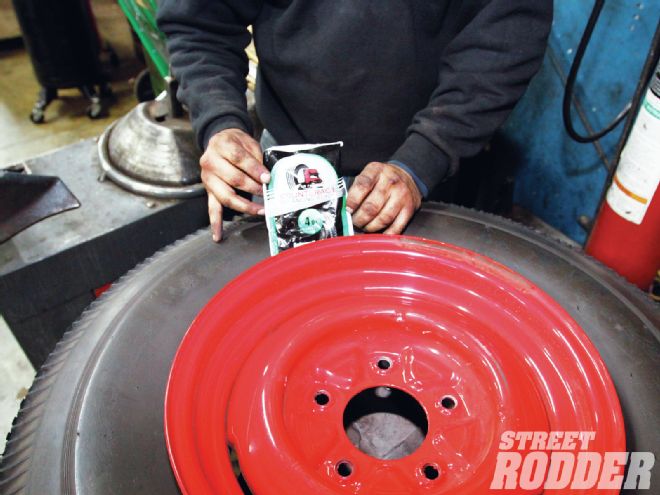 Larson discovered the easiest way to install the beads was to tear open the small bag and dump the contents into the large bag it came in.
Larson discovered the easiest way to install the beads was to tear open the small bag and dump the contents into the large bag it came in.
The subject of our installation was our daily driver Model A pickup with tubeless bias-ply tires, 5.90-15s up front and 8.20-15s in back. Tread depth on all the tires was roughly 50 percent and they had been balanced since new. Both front tires had roughly 4 ounces of weight added and both rear tires required slightly over 6 ounces to bring them into balance. Despite several attempts at balancing all four tires, the truck has always had a very slight vibration around 72-74 mph (which seemed to be coming from the rear). Our solution has been to drive above or below that range.
According to the instructions, Counteract Balancing Beads can be added to tires through the valve stems (after the valve core is removed) with the included plastic bottle and hose. Initially we didn’t have much luck with that method as the beads just collected in the stem and wouldn’t flow into the tire. At that point we headed to the local tire shop and had the tires broken from the rims so the beads could be poured in. Later we were advised that putting a vibrating sander, without sandpaper, against the hose and found that it worked when we had to add additional beads.
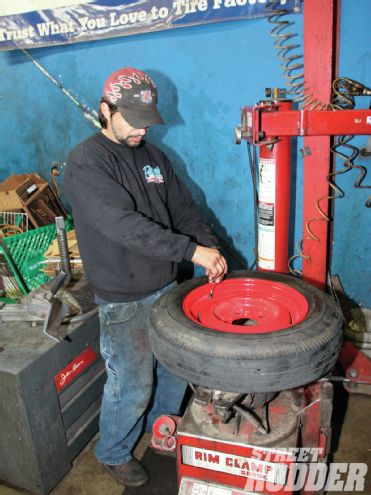 To prevent leaks, new valve core and a valve cap with a seal are included with each kit.
To prevent leaks, new valve core and a valve cap with a seal are included with each kit.
After removing the clip-on weights, Jason Larson at Potter’s Tire Factory in Florence, Oregon, added the recommended 4 ounces of beads to each tire. We had our doubts that the same amount of beads in tires that were so different in size, and had required vastly different amounts of weight to balance, would work. A short testdrive confirmed our suspicions, as the vibration was worse. On a hunch we went back to the tire shop and added 2 more ounces to each rear tire then went for another drive. With the additional weight the truck was smoother, but there was still room for improvement. Back at our shop we added another ounce to each front tire and that did the trick. The truck is now smoother than it was before up to 72-74 mph, where a slight vibration begins that is virtually the same as we’ve had all along. We’ve since traced that issue to a slightly out-of-round tire.
So, what’s our verdict? When all was said and done we can report the Counteract Balancing Beads worked about the same as conventional balancing. They’re more expensive than spin balancing, but for those who don’t like the look of clip-on wheel weights the extra cost may be worth it. But that’s another kind of balancing act.
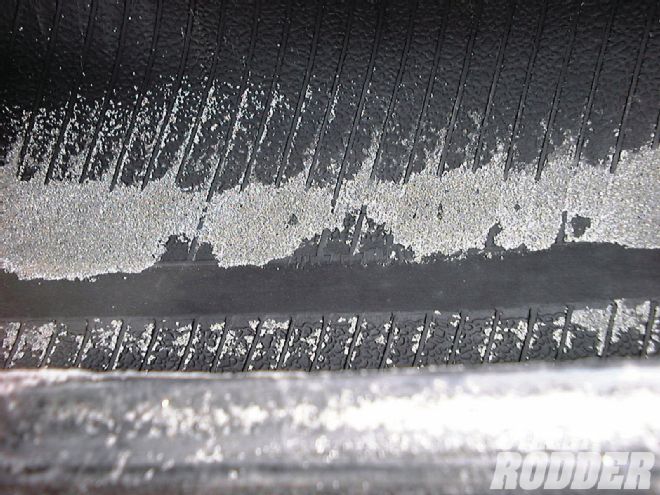 This photo, courtesy of Counteract, shows how the beads distribute themselves in the tire. They will correct static and dynamic imbalance.
This photo, courtesy of Counteract, shows how the beads distribute themselves in the tire. They will correct static and dynamic imbalance.